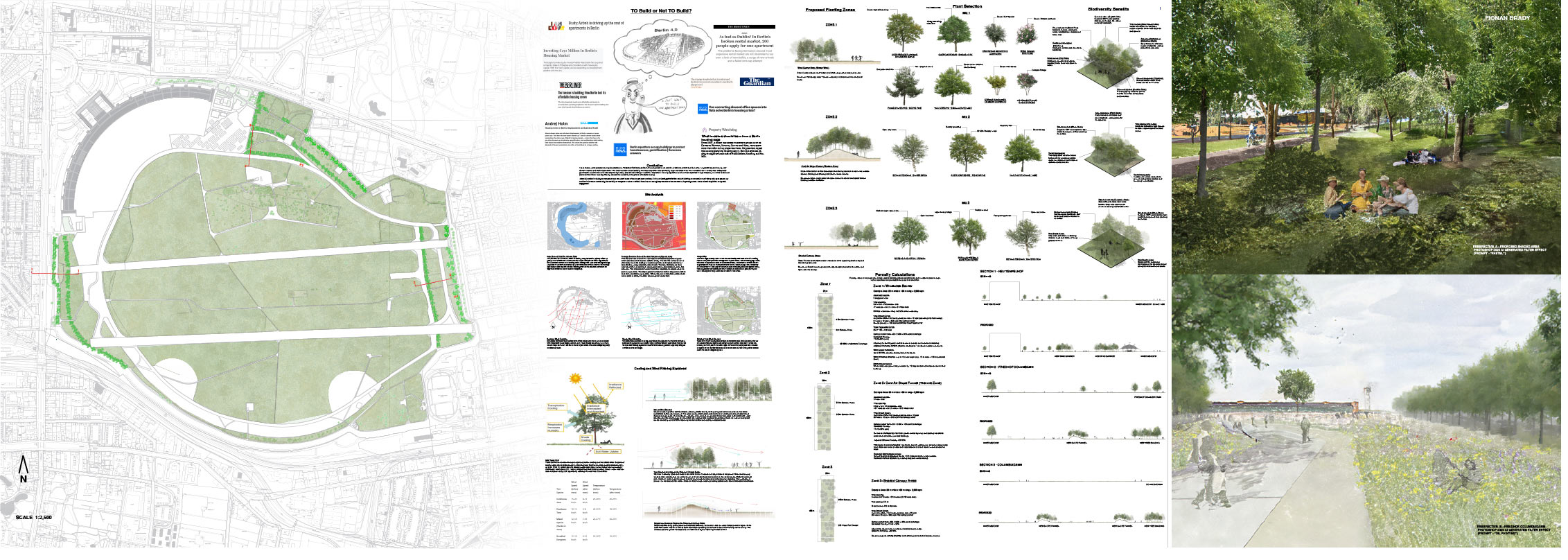

Fionan Brady
Tempelhof Feld Wind Management Strategy
I have chosen not to propose housing development on Tempelhof Feld because Berlin’s housing crisis is not caused by a lack of available land, but by deeper systemic issues. These include speculative investment, mass property acquisitions by large real estate firms, unchecked rent increases, widespread gentrification, and the city’s failure to repurpose its many vacant buildings. Additionally, regulatory loopholes—such as those permitting short-term rentals through platforms like Airbnb—have significantly reduced the stock of long-term, affordable housing.
In this context, building on Tempelhof Feld would not address the root causes of the crisis. On the contrary, it would accelerate privatisation and weaken one of Berlin’s most essential public open spaces. My proposal instead focuses on enhancing Tempelhof Feld as a resilient, inclusive, and ecologically meaningful urban commons, supporting shade, climate adaptation, and public engagement.
Tempelhof Feld, one of Berlin’s most iconic open spaces, presents both an opportunity and a challenge in urban landscape design. Its vast, unobstructed expanse is subject to strong prevailing winds, particularly from the west and north in winter, which impact the comfort and usability of the space. At the same time, rising temperatures and increased urban heat during the summer months demand strategic interventions that provide shade, cooling and climate resilience.
This project proposes a planting and landform strategy for the outer sections of Tempelhof Feld, using native, climate-resilient species and constructed slopes to shape wind patterns and enhance thermic wind effects for natural cooling, creating a wind-moderating "funnel" effect. The aim is to shape winter airflow in a way that reduces wind intensity while maintaining openness and ecological balance. Summer thermic winds generated through temperature differences between shaded and sunlit surfaces will be optimised to enhance passive cooling. Constructed slopes will further guide and deflect airflow, preventing excessive turbulence and creating localised microclimates that improve comfort. Additionally, carefully positioned vegetation will provide seasonal shade in high activity zones while improving microclimate conditions without compromising the site’s historical and recreational significance.
By integrating ecological restoration, wind mitigation, and climate adaptation, this project seeks to enhance Tempelhof Feld’s usability for visitors while reinforcing its role as a model for sustainable urban landscapes. Through strategic planting and a nature-based approach, the intervention will contribute to Berlin’s broader climate resilience efforts, ensuring that Tempelhof Feld remains a welcoming and comfortable public space in the years to come.